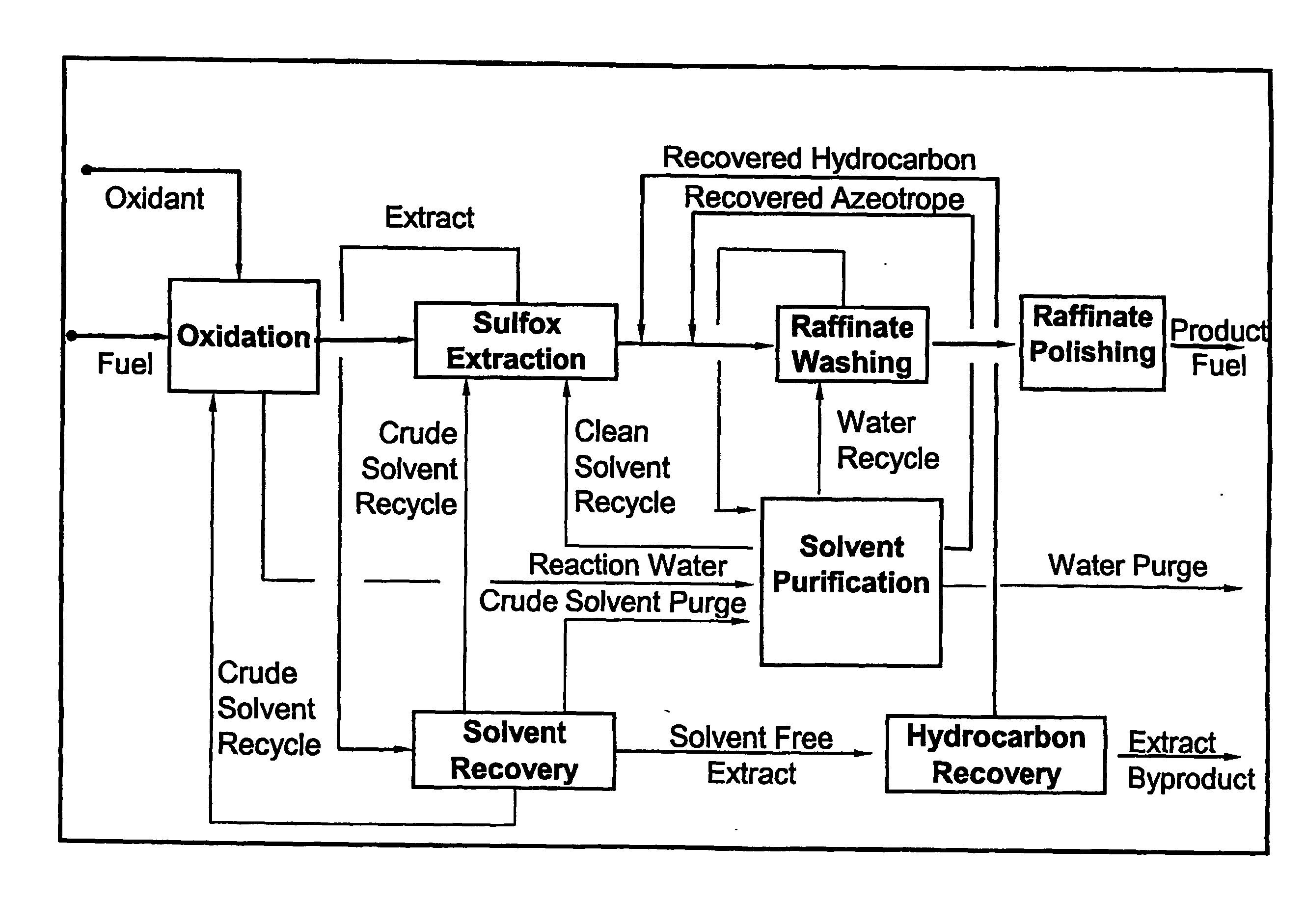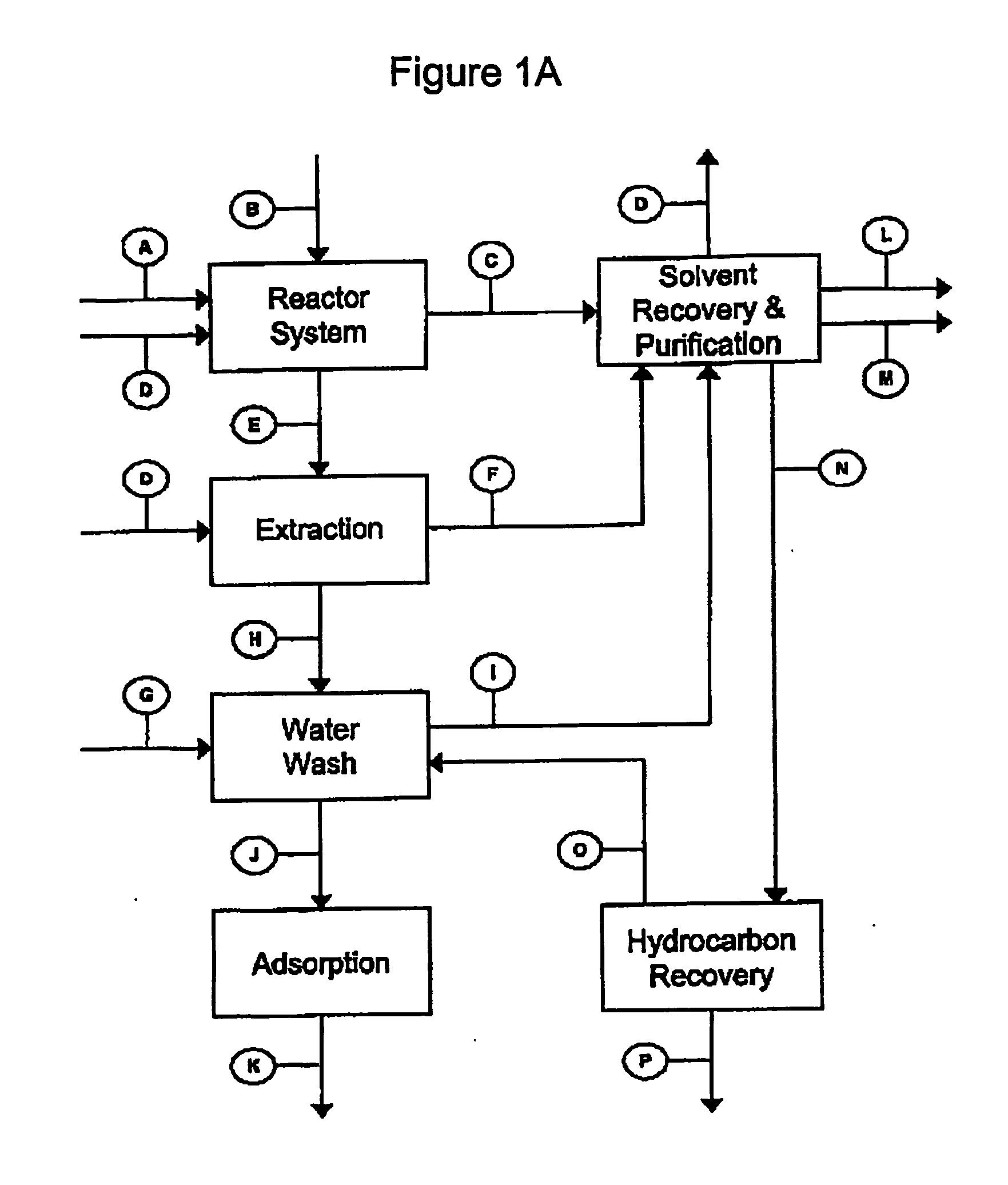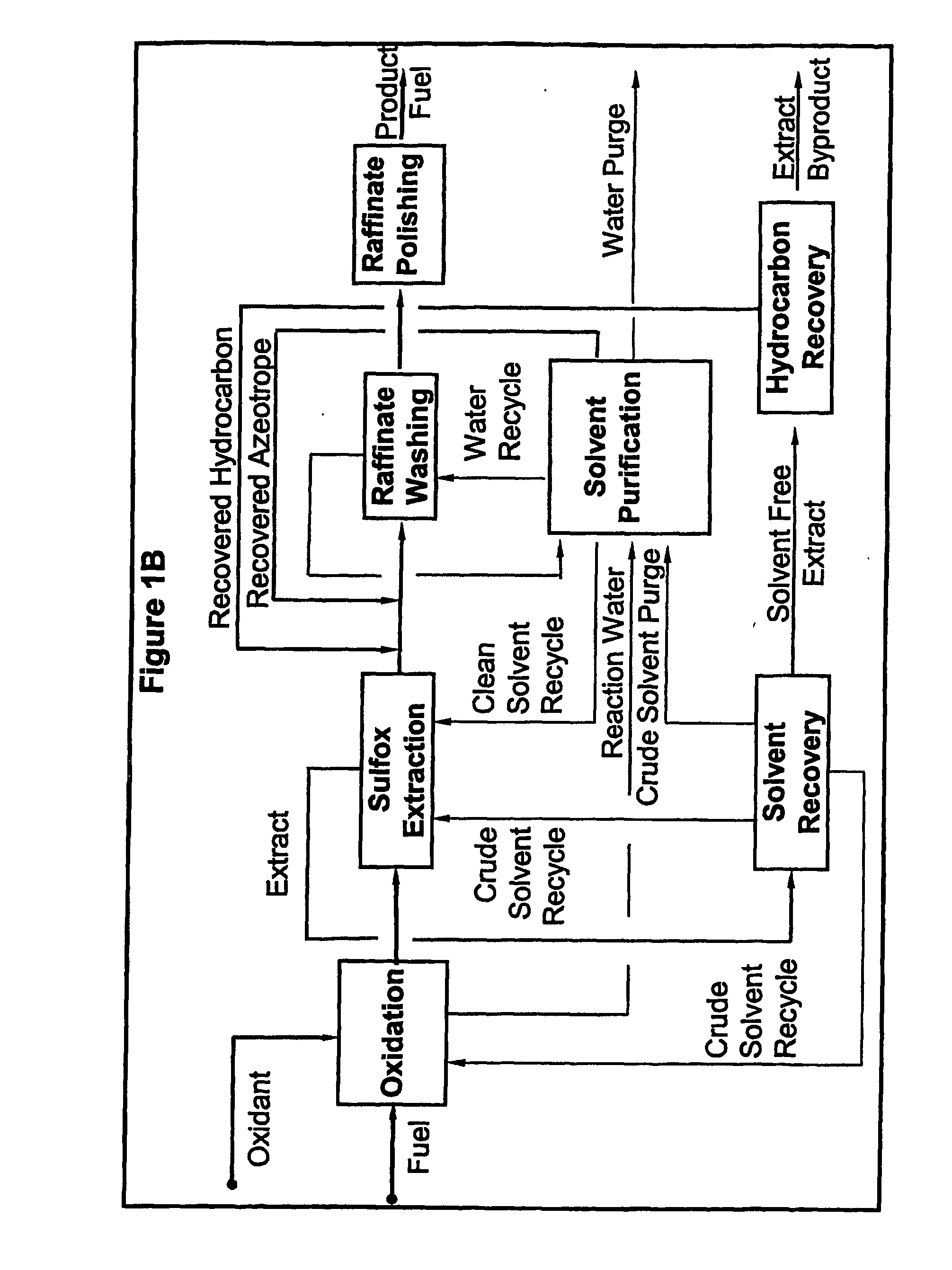Method and Apparatus for Converting and Removing Organosulfur and Other Oxidizable Compounds from Distillate Fuels, and Compositions Obtained Thereby
a technology of organosul which is applied in the field of methods and apparatus for converting and removing organosulfur and other oxidizable compounds from distillate fuels, and compositions obtained thereby, can solve the problems of difficult desulfurization of hds, undesirable sulfur pollutants of organosulfur compounds, and newer hds technology that requires more demanding desulfurization conditions, so as to improve the storage stability of a produ
- Summary
- Abstract
- Description
- Claims
- Application Information
AI Technical Summary
Benefits of technology
Problems solved by technology
Method used
Image
Examples
Embodiment Construction
[0034] A schematic block flow diagram showing one preferred embodiment of the invention is given in FIG. 1A, attached, and described in more detail below.
[0035] The invention process is particularly suitable to treat middle distillate fuels that contain a broad array of sulfur compounds. The sulfur compounds may be present in per cent level concentrations. The oxidant is a peroxycarboxylic acid. The inventors found that the carboxylic acid used to form the peroxycarboxylic acid is optimally used as the solvent. If a different solvent is chosen, then two separate “Solvent Recovery and Purification” steps and two separate “Hydrocarbon Recovery” steps would be needed.
[0036] 1. Reactor System
[0037] The first step in the process is to combine the oxidant solution in Stream A, the high sulfur feed in Stream B and the carboxylic acid or an aqueous solution of the carboxylic acid in Stream D1 in the “Reactor System”. In this step, the organosulfur compounds in the fuel are converted to s...
PUM
| Property | Measurement | Unit |
|---|---|---|
| pressure | aaaaa | aaaaa |
| boiling points | aaaaa | aaaaa |
| temperatures | aaaaa | aaaaa |
Abstract
Description
Claims
Application Information
 Login to View More
Login to View More - R&D
- Intellectual Property
- Life Sciences
- Materials
- Tech Scout
- Unparalleled Data Quality
- Higher Quality Content
- 60% Fewer Hallucinations
Browse by: Latest US Patents, China's latest patents, Technical Efficacy Thesaurus, Application Domain, Technology Topic, Popular Technical Reports.
© 2025 PatSnap. All rights reserved.Legal|Privacy policy|Modern Slavery Act Transparency Statement|Sitemap|About US| Contact US: help@patsnap.com



